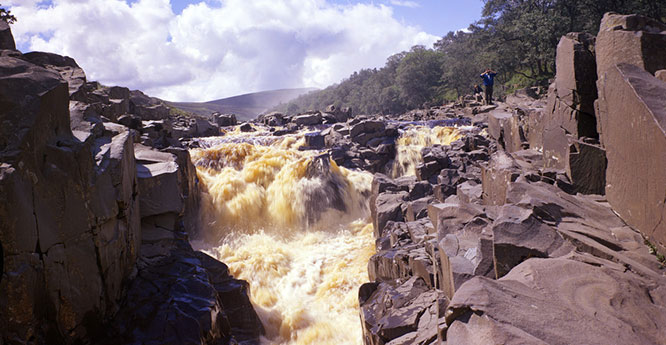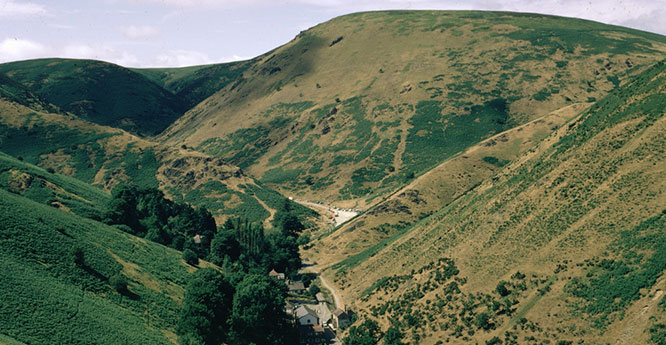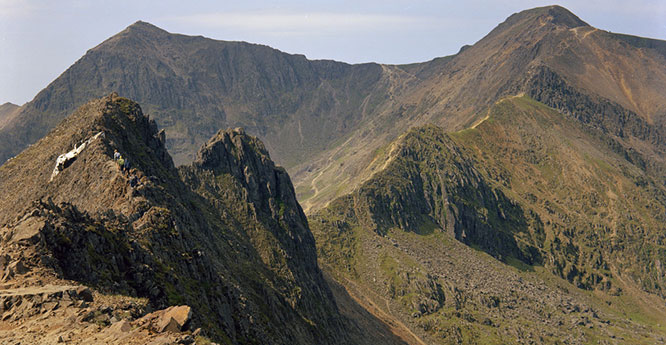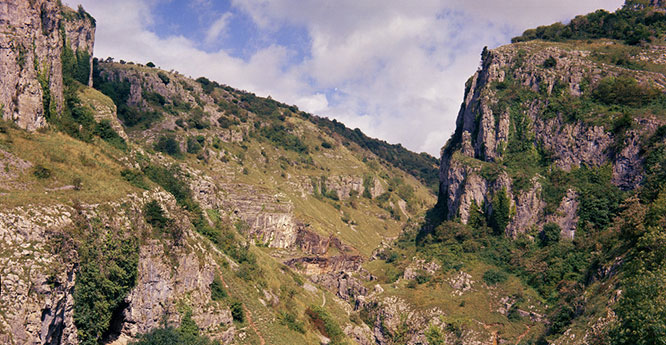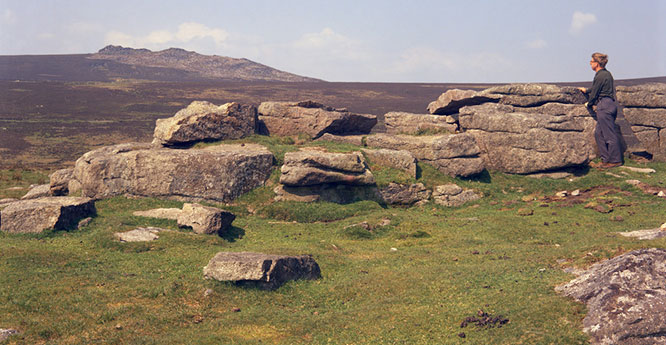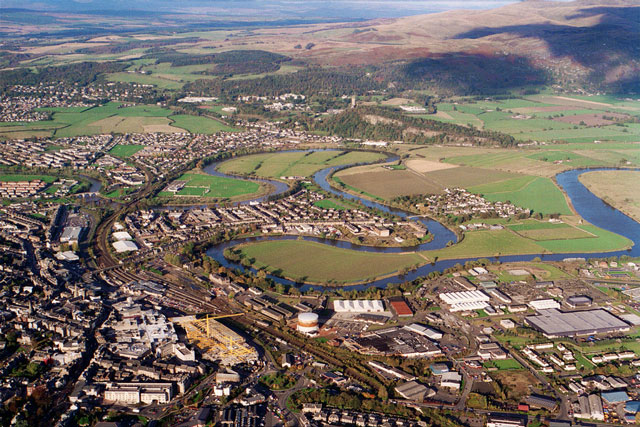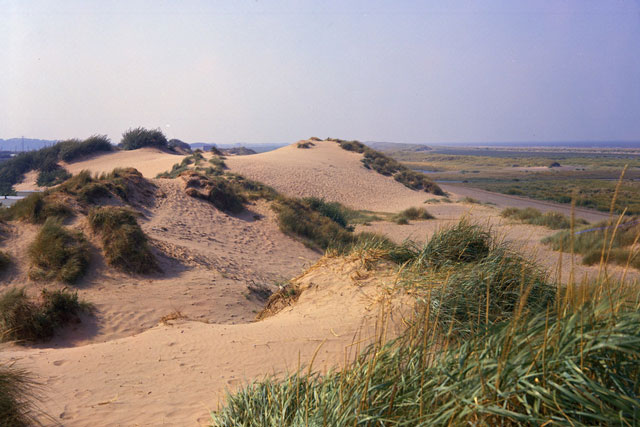‘Relief’ is the term used for the differences in height from place to place on the land’s surface and it is greatly affected by the underlying geology. Relief relies on the hardness, permeability and structure of a rock.
The effect of rock hardness on relief
Some rocks are hard and resistant to weathering and erosion, while others are softer and easily worn away. Where a hard rock like sandstone sits next to a soft rock such as clay, the first will form the uplands and the second will form the lowlands.
Igneous rocks can be very hard. Granite, for example, is very resistant to weathering and erosion and so forms high, rugged landscapes such as Bodmin Moor in Cornwall or Dartmoor in Devon. Granite will eventually break down by chemical weathering.
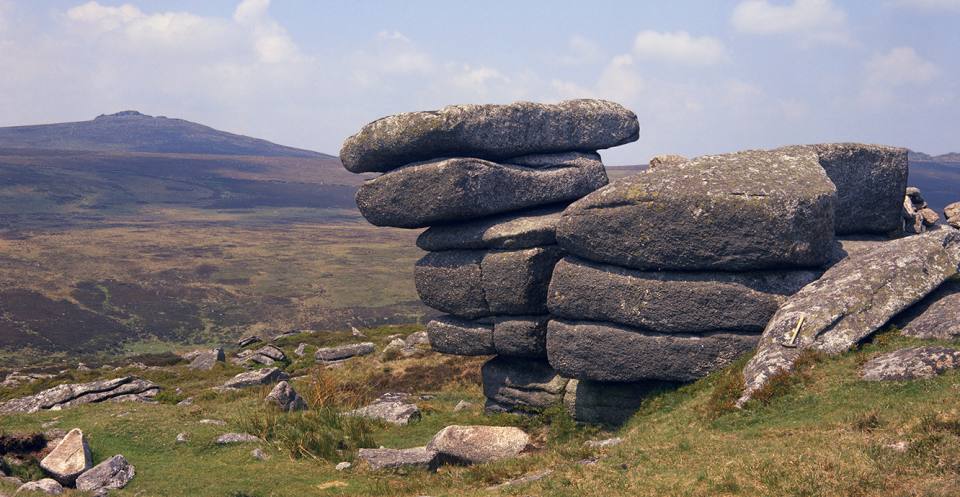
Harder rocks stand strong in a landscape that has been weathered away by the elements. Eventually these rocks will also weather, too. BGS © UKRI.
Rocks that are buried deep within the crust or squeezed under Earth’s movements and at plate boundaries will change and harden in a process known as ‘metamorphism’. For example, when clay is squeezed intensely it changes into slate. The clay would have been soft and susceptible to erosion but, after changing to slate, it becomes hard and resistant to erosion.
The mountains of the Lake District and Wales are formed of slate. The Western Highlands of Scotland are formed of a rock called gneiss, which is another type of metamorphic rock.
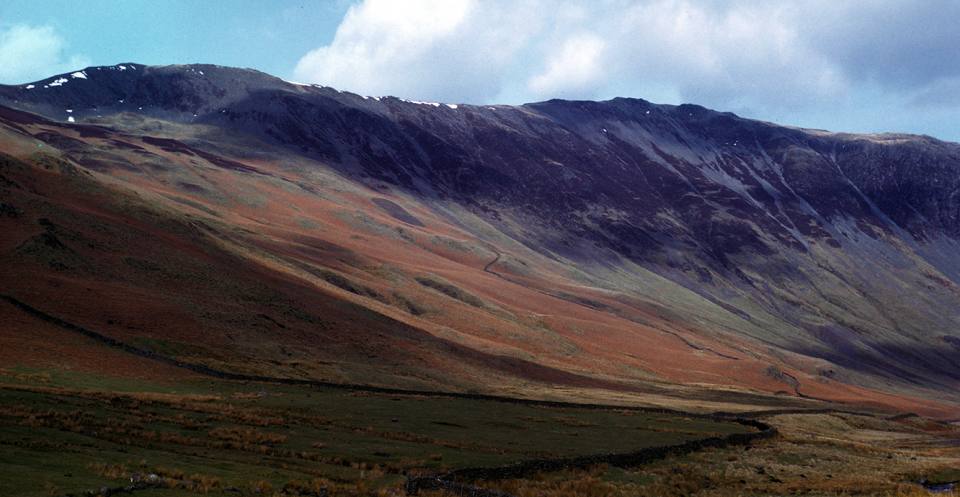
Difference between the protruding, harder rocks of the hills versus the softer rocks in the valley. Lake District. BGS © UKRI
Sedimentary rocks may be hard enough to form hills and mountains. Some sedimentary rocks, such as the sandstones of Exmoor in Devon, are very hard and resist weathering and erosion.
Limestones also make low hills where they sit alongside mudstones. The Cotswolds, for example, are hard limestones rising above mudstones.
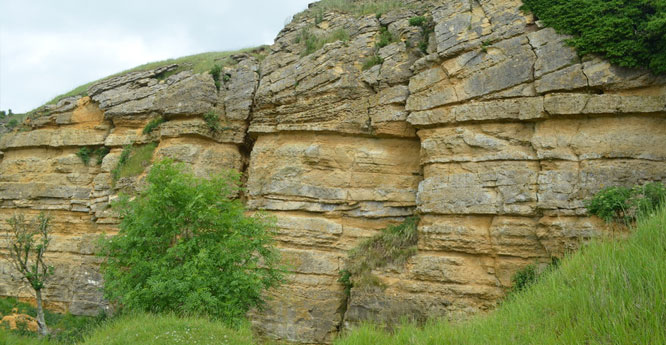
Cleeve Cloud Member of the Birdlip Limestone Formation, Cheltenham, Gloucestershire. BGS © UKRI.
The effect of rock permeability on relief
The term permeability refers to whether and how water can flow through a rock. The permeability of a rock is important because even fairly soft rocks can form hills if water is not able to flow over them easily. Most of the chalk in southern England, for example, is not very hard, but rainfall percolates through it very rapidly and water is not able to flow over its surface. This is why the chalk is not easily eroded and forms chains of hills.
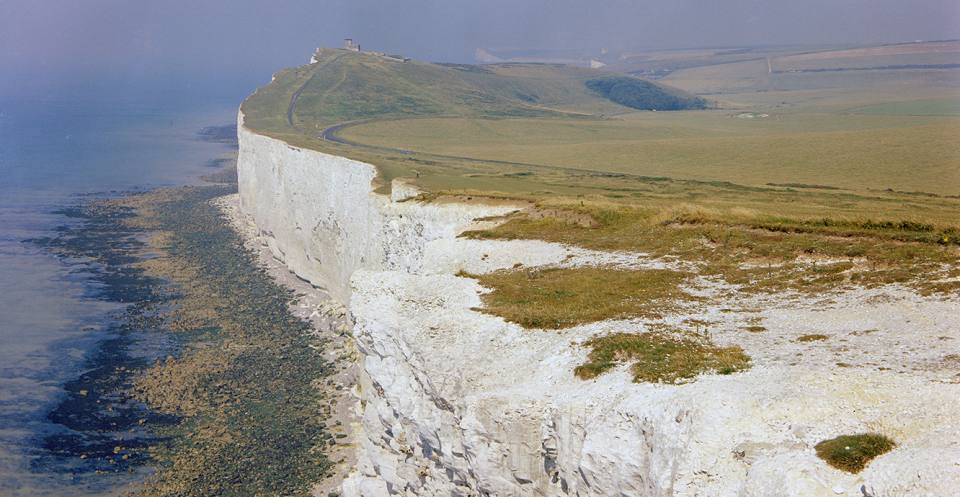
Chalk sea cliff between Beachy Head and Birling Gap, East Sussex. © Crown Copyright.
Clays, such as those found in the Weald, the Vale of Belvoir, Trent Valley and the Vale of Aylesbury, are impermeable. Rainwater cannot sink through, so it flows over the surface as streams and rivers, causing erosion. Not only is the clay worn away because it is soft, but it is worn away even more rapidly because it is impermeable too.
The effect of rock structure on relief
Sometimes the structure of the rocks is important in determining relief. Between about 15 and 35 million years ago, when the African Plate pushed against the European Plate, a high mountain chain, the Alps, was pushed up in France, Switzerland, Austria and Italy. This ‘Alpine’ phase of mountain building did not make large mountains in Britain (the colliding plates were too far away), but it did buckle the chalk rocks of southern England. The North and South Downs originally formed one flat sheet of chalk that stretched across south-eastern England. However, Alpine mountain building pushed it up into a large fold called an anticline. The weakened chalk in the anticline was eroded away, leaving two chains of hills on its sides (the North and South Downs).


The effect of structure on relief.
You may also be interested in

Discovering Geology
Discovering Geology introduces a range of geoscience topics to school-age students and learners of all ages.
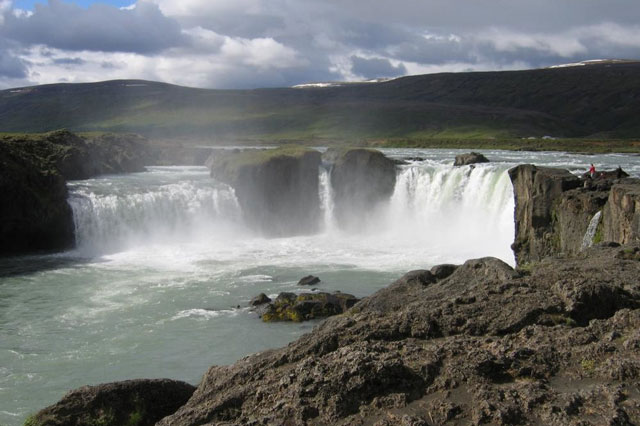
Geological processes
Planet Earth is dynamic with a surface that is always changing. Find out about the processes that cause these changes.
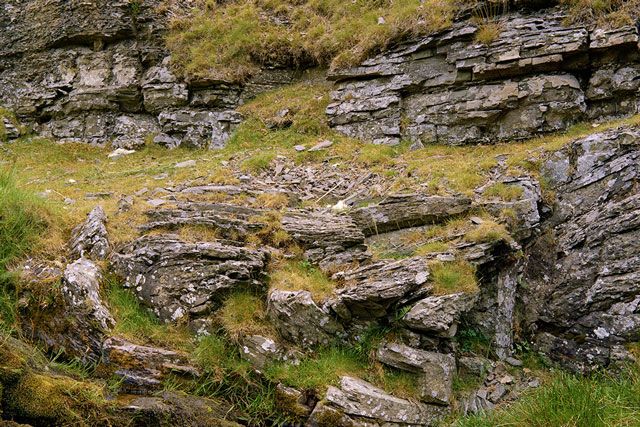
Weathering
Weathering is the wearing down or breaking of rocks while they are in place.
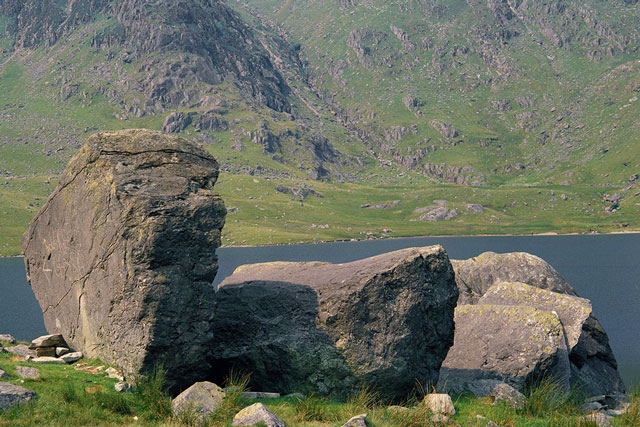
Deposition
Deposition is the laying down of sediment carried by wind, water, or ice.


